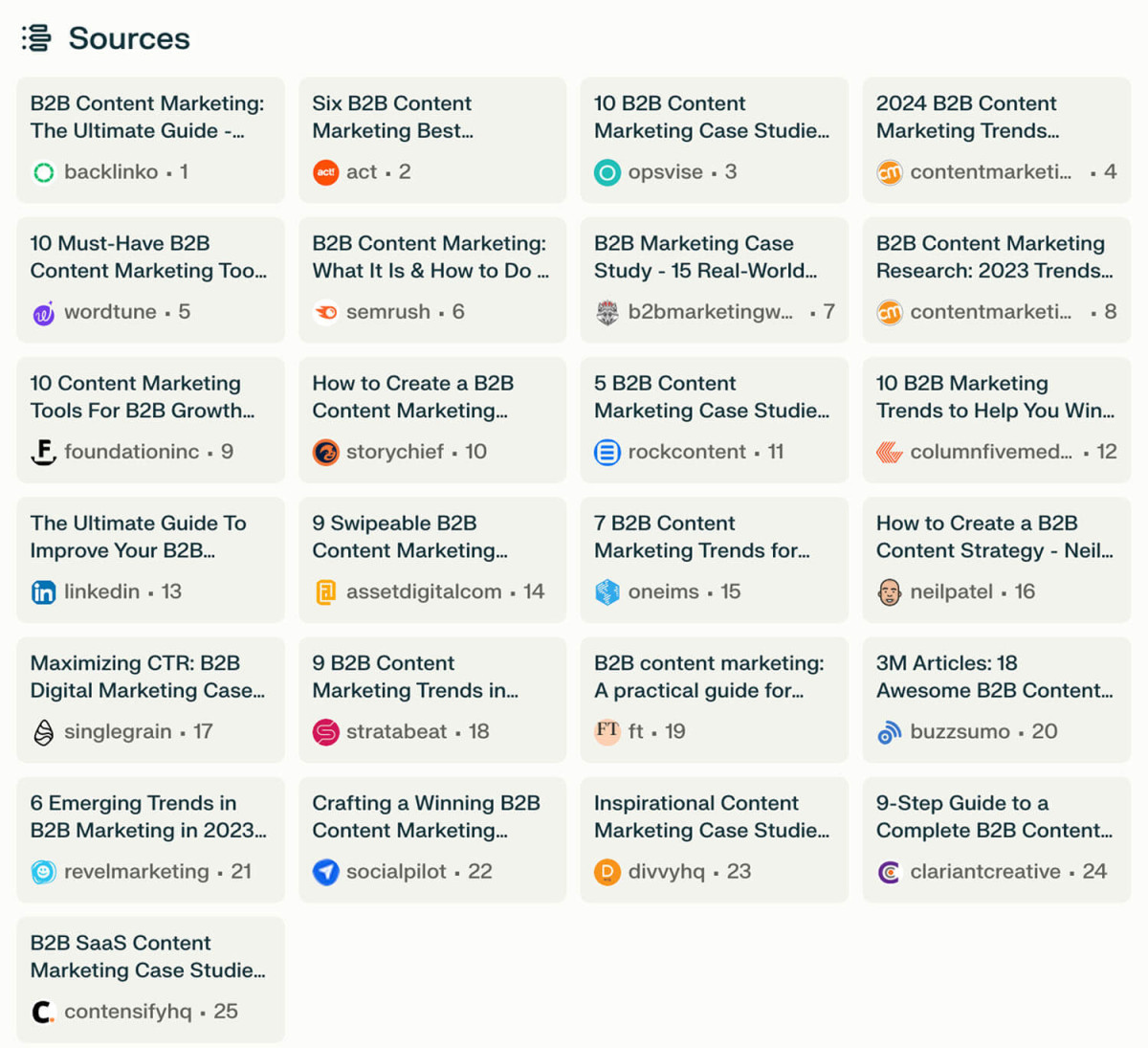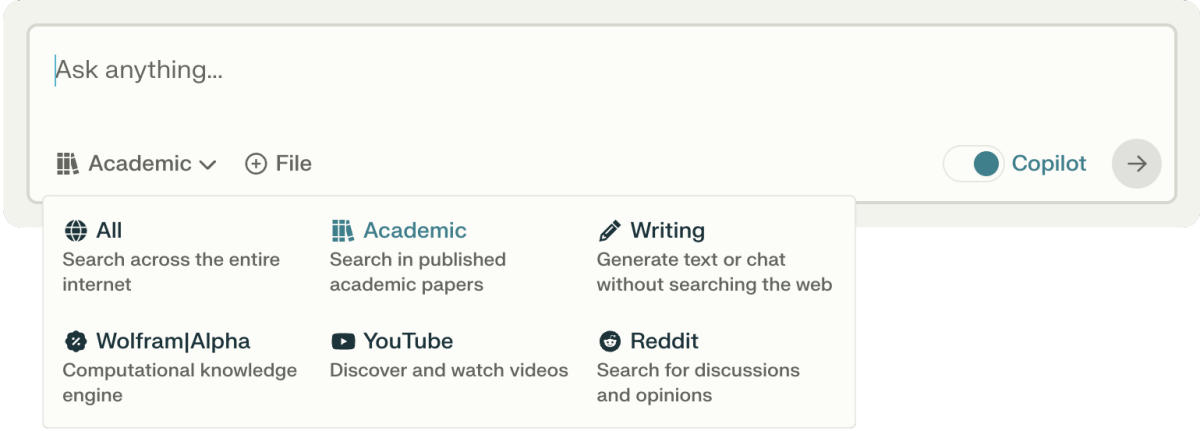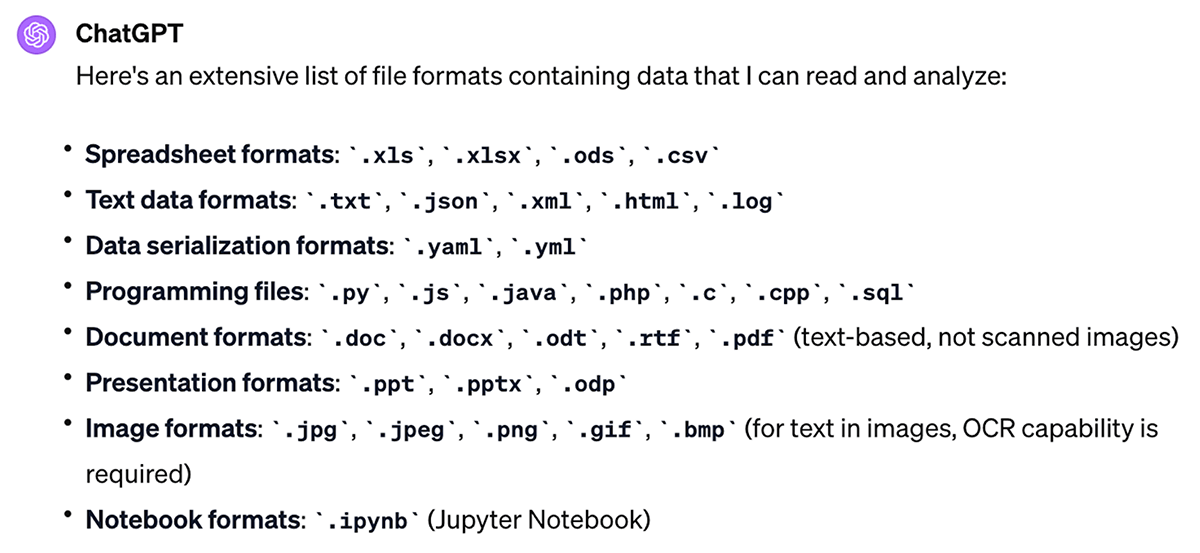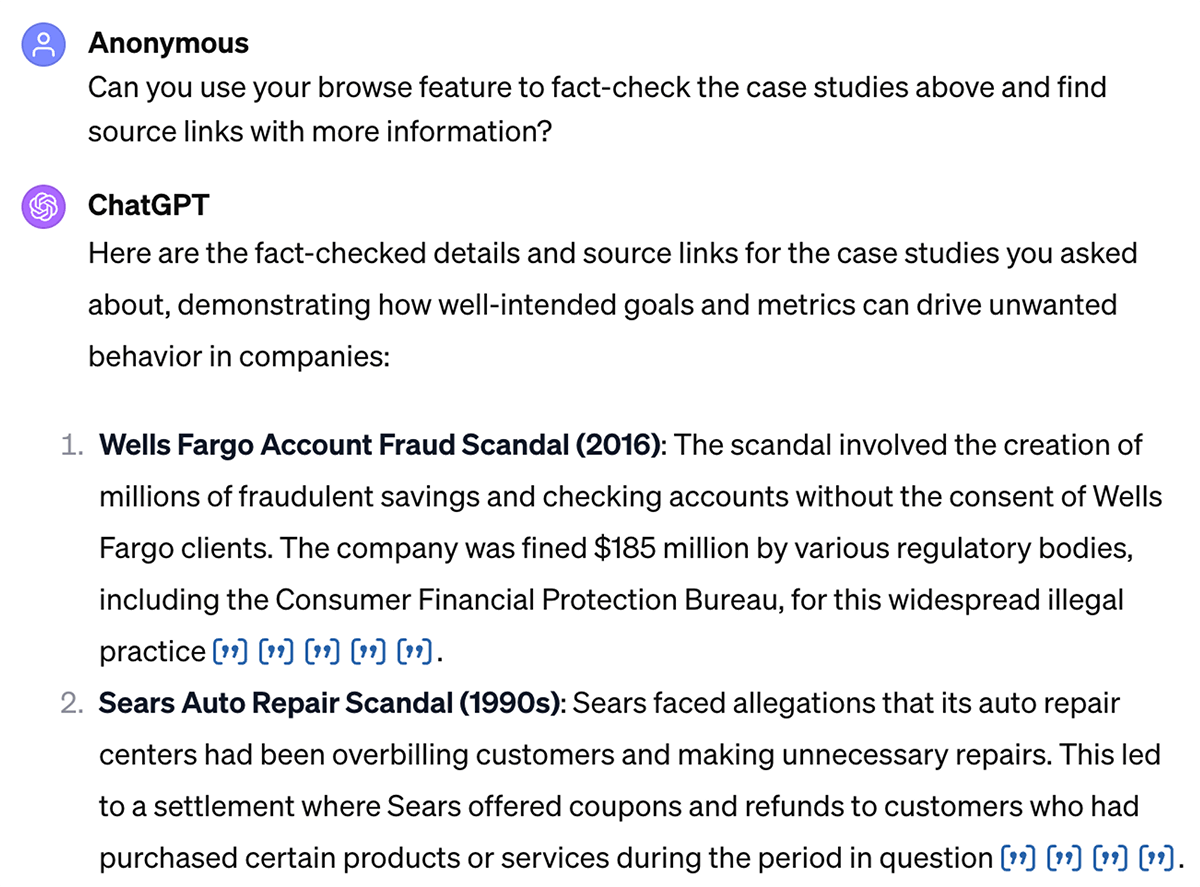Our in-house innovation lead, Tim Metz, explores new ideas and technologies for our customers and content. In this article, he shows how content teams can use AI tools in their research process.
Your first experiences with ChatGPT are likely similar to mine: excitement, wonder, and fear, quickly followed by disappointment — and some relief — about its hallucinations. Those incorrect facts, figures, and fantasies have branded AI as untrustworthy.
Much has changed since ChatGPT’s release. Its Plus version browses the web and reads files. The GPT-4 engine on which it runs is much better than its predecessor and powers other apps, like Perplexity AI, a research tool designed to counter some of ChatGPT’s flaws.
“Reports of my hallucinations have been greatly exaggerated.” – ChatGPT Plus
These capabilities can give you superpowers that boost research quality and speed. Forget table stakes like using AI to brainstorm headlines or expand a list of SEO keywords. If you suspend disbelief about AI’s trustworthiness for the next ten minutes, you’ll see it can handle many chores of your research process.
ℹ️ What you need to know to make the most of this guideWhat follows are advanced AI research tactics. If you haven’t used ChatGPT much in your workflow yet, first check out these resources to get a better grasp of how to use AI for content creation:The Content Cyborg: How to Use AI Writing Tools in Content Marketing (Animalz)GPT-3 is the Sparring Partner You Didn’t Know You Needed (Animalz)Learn Prompting: Your Guide to Communicating with Artificial Intelligence (Learnprompting.org)We’ll walk through the typical research process more or less chronologically. To make the most of this guide, have a topic at hand you need to research and follow along with each step.Throughout this article, you’ll recognize examples that open in new browser windows by the red pin: 📌. A robot accompanies prompts for AI tools: 🤖.There are many AI tools for research, but we’ll focus on just two that can cover most of your needs: ChatGPT Plus and Perplexity.ChatGPT needs no introduction. (Just make sure you’re on the Plus plan using its GPT-4 engine.)Perplexity takes a question and searches sources like Bing, academic papers, YouTube, and Reddit for answers. It then uses AI to create a summary for you from all the relevant info it finds and attributes its sources without much hallucination.Check out Perplexity AI: What You Need to Know and How to Use It to learn more about the founding story and Perplexity’s underlying workings.
1. Go From Stalled to Started: AI as Your Research Ignition
Many content marketers say AI helps with “blank page syndrome.” A mediocre outline or draft at the press of a button gets you over the hump of starting.
Perplexity solves the research equivalent of this problem. Tell Perplexity the subject you need to master and where it should look. It then creates a comprehensive answer from relevant resources — which are plentiful, especially compared to ChatGPT.

🤖 Perplexity prompts for a great research kick-off on any topic:
“I'm trying to build an understanding of {insert your topic} to become an expert on the topic. Please research the topic and important sub-topics and organize relevant resources in a MECE list.”
“Please compile an overview of recent advancements in {insert your topic}, including key players, significant milestones, and emerging trends.”

2. Synthesize Search Results in Seconds, Not Hours
I don’t know about you, but going through five pieces of 💩 content to find one 💎 with helpful insights isn’t my idea of a good time. But this chore is unavoidable if you want to understand:
A topic’s fundamentals
What others have already said
How you can add to the conversation (what we call information gain)
AI tools let you survey the current content landscape instantly, so you have more time to uncover nuance and a unique point of view. Perplexity is especially effective, because it consults many more sources than ChatGPT. Still, using both tools to get two perspectives doesn’t hurt.
🤖 Ask the following questions in both tools:
“Please review what has already been covered online about {insert your topic}. Let me know if there are aspects of that topic that still need coverage or haven't been explained well by existing articles.”
“Identify and summarize the top five most influential papers or articles on {insert your topic}, and explain their significance in the field.”These questions give an overview of the topic’s current landscape and potential gaps for your article to fill — without having to suffer through tons of copycat content.
📌 As an example, let’s again take “b2b content marketing strategies.” Here’s Perplexity’s output versus what ChatGPT has to say. ChatGPT’s response looks impressive until you check its sources and realize it’s quoting from just a handful.
Reid Hoffman, cofounder of LinkedIn and former board member of OpenAI, offers a valuable insight in his book Impromptu. He discusses his experiences with an early version of GPT-4, highlighting how to understand and use AI’s synthesizing abilities:
“While the information it [GPT-4] had provided was partially wrong, it was also mostly right. And, most importantly, GPT-4 produced this information extremely quickly. When I’d Googled the same kind of information, it offered me dozens of links, some of which looked promising, others not. The Wikipedia experience differed in details but not in results. With GPT-4, though, its capacity to instantly synthesize information from a wide range of sources meant that I received exactly the kind of list I’d been envisioning within seconds. This list contained errors, but that was OK because — and this is a key point — I wasn’t looking for or expecting a finished product. I was looking for an informed starting point, a rough map of the territory I wanted to explore, to help me quickly get a sense of which questions I should be asking.”
3. Skip the Skim: Let AI Digest Research Papers
Follow the trail of statistics quoted in most blogs, and they usually lead to one another. Chances are also high you’ve come across The Marshmallow Test, The Bystander Effect, or The Stanford Prison Experiment — famously captivating studies to build hooks or arguments.
Rarely do we encounter unique, insightful research that’s correctly quoted and attributed. There’s a reason: finding relevant research papers is a feat, and reading them another.
Both Perplexity and ChatGPT make this process easier. When you enter a search in Perplexity, you can focus your query with an option to only look through academic research papers.

Once you’ve used Perplexity to find relevant papers and saved them to PDF, you can let ChatGPT dig into these documents.
Asking for the obvious is to summarize a paper, and that will work fine. But ChatGPT can also look for specific information.
🤖 Some favorite ChatGPT questions for research papers:
“What questions will this paper help the reader answer?”
“What metrics, statistics, or numbers does this paper include on {insert your topic}?"
“Can you steelman the most important findings of this report, then steelman the most opposing view you could have of this paper?
“What are the most important similarities and contradictions in the attached papers?” (Requires you to attach more than one file to your prompt.)4. Find a Needle in the Digital Haystack
Once you’ve finished broad research on a topic, you’ll need specific information: best practices, examples, statistics.
Say you want case studies that illustrate how well-intended goals can drive unwanted behavior. ChatGPT understands that request better than Perplexity. Still, running your request through both services always helps; you’ll get more answers and examples.
📌 ChatGPT answers our case study request more effectively than Perplexity.
You can also direct both tools to search for information from a specific link, for example, to extract key points about a topic from a particular article. In this scenario, each tool works differently:
ChatGPT Plus: Be specific about what you’re looking for. Otherwise, ChatGPT might not actually visit your link or extract irrelevant info.
Perplexity: Even when you provide a specific link, Perplexity always complements its answers with additional information from other sources. This behavior is sometimes helpful, but you should be aware of it.
🤖 Here are some ways to phrase such a request:
“Please summarize the key concepts and insights related to {insert your topic} from the following LINK. Make sure to extract only information that’s related to said topic.
LINK: {insert link}”
“Locate and summarize case studies or real-world examples that demonstrate innovative approaches to {insert your topic}.”5. Be a Data Wizard (Even if You Aren’t)
When this article was still an outline, analyzing lots of data with ChatGPT was challenging. You needed a plugin or developer who understands Python or JSON. But as this outline became a draft, OpenAI released a ChatGPT update that dazzles with the file formats it can handle.

🤖 Ideas on how to use these data capabilities:
“Highlight the most important arguments and statistics from the attached keynote deck.”
“Find interesting and unusual correlations in the attached dataset.
“Identify trending themes, overlap, and contradictions in the attached files.
“Create a bar chart from the attached data in weekly increments for the year 2023.
“Prepare a graph that shows organic traffic on a per-article basis for the previous month.”These last two examples point to a valuable use case for content marketers: Making graphs and charts from data to create reports for your customers or managers.
ChatGPT’s file fluency also includes image formats. This ability comes in handy for several research situations:
Digitize handwritten notes. Helpful if you take notes on paper or whiteboards, but also for any other physical artifacts you encounter during research.
Convert a picture of a table to editable text. Upload an image of a table to ChatGPT and ask to recreate it in text or spreadsheet format so you can edit or polish it.
Explain graphs and charts. Sometimes, you find intriguing diagrams you don’t understand — at least, it happens to me. ChatGPT can review such charts and explain what they mean.
6. Act as an SME Interview Co-Pilot

An article about research must cover SME interviews, those primary sources of insights, anecdotes, and expertise. AI can help with their preparation and aftermath.
🤖 Favorite AI use cases to help prep for interviews:
Find experts. Perplexity is pretty good at finding interview candidates based on a topic. (📌 Here’s an example prompt and its result.)
Craft and complement questions. Create a list of interview questions, then ask ChatGPT to improve and complement them. Make sure to give detailed context about your article and the interviewee.
Simulate interviews. If the stakes are high or your confidence low, practice with an AI-simulated version of your conversation. (📌 Here’s an example of how to set up such a simulation in ChatGPT.)
AI is also helpful when you’ve wrapped up the talk. Use a tool like Grain or Otter.ai to record and transcribe the interview. Upload the transcript to ChatGPT and perform similar tricks as we did with research papers and data sets: summarize, analyze, compare, and so on.
One approach I find especially useful is letting ChatGPT suggest all the possible ideas you can extract from an interview. An engaging conversation provides many potential topics and perspectives. AI can quickly create an overview of those directions and propose a few you might have missed.
7. Fight Fire With Fire: AI Fact-Checking
AI fact-checking is an oxymoron no more. You can now let AI tools do some of the fact-checking for you. But while carpenters say, “measure twice, cut once,” content marketers using ChatGPT should follow the mantra, “measure thrice, cut once.”
1. ChatGPT checks ChatGPT. Force it to review its own questionable responses with the browse function.
Say we want to fact-check the earlier example where we asked AI to find us some case studies. You can (and should!) let ChatGPT fact-check that list of suggested case studies:

2. Perplexity checks ChatGPT. Even when you ask ChatGPT to fact-check something, it might hallucinate sources (and do so convincingly!). So run the output through Perplexity whenever an answer has fishy sources (or none at all).
📌 Here’s an example of how Perplexity fact-checks ChatGPT’s case study list.
3. Human you checks sources. Do a final review yourself. Pay special attention to the reputation of sources and whether links go to actual articles instead of general index or non-existing pages.
🤖 AI fact-checking prompts you can use:
“Can you use your browse feature to fact-check the answer above and find source links for its claims and information?” (To respond to an AI tool’s answer.)
“Cross-verify the accuracy of the following/attached information related to {insert your topic}, and provide sources or evidence supporting the verification.” (For checking information you found elsewhere.)So We Can Trust AI Now? 🤨
Don’t trust the free version of ChatGPT any more than you’d trust a backlink broker.

ChatGPT Plus subscribers can have more confidence in the answers they get because of its GPT-4 engine, file upload feature, and browsing capabilities. Still, these functionalities don’t justify blind trust in AI output — always act like a content journalist:
Verify sources and their reliability. Essentially, treat AI answers like Google search results: sometimes helpful but always deserving scrutiny.
Cross-reference with multiple sources. Don’t take the first info AI gives you at face value. See if you can get the output confirmed elsewhere.
Disclose your sources. Let readers know you’ve used AI research tools. You can even share links to the tools’ results (like I did throughout this article).
Avoid bias. AI tools can exhibit biases from their training materials. Make sure the information you use isn’t biased in areas like gender or race.
Despite these necessary precautions, don’t let reports of hallucinations distract you from AI’s research possibilities.
For now, think of AI as your eager research trainee — sometimes overenthusiastic, occasionally daydreaming, but always ready to take on your chores, speeding them up, or eliminating them from your to-do list altogether. With AI’s help, your content will become more informative and interesting, based on materials you could have never found or read on your own.
Even if its current capabilities seem crude or sometimes inaccurate, they’re just glimmers of the future. Maybe someday soon, the only ones hallucinating will be those who believe AI can’t help with research at all.
Thanks to Ryan Baum for editing this piece and providing invaluable insights.
